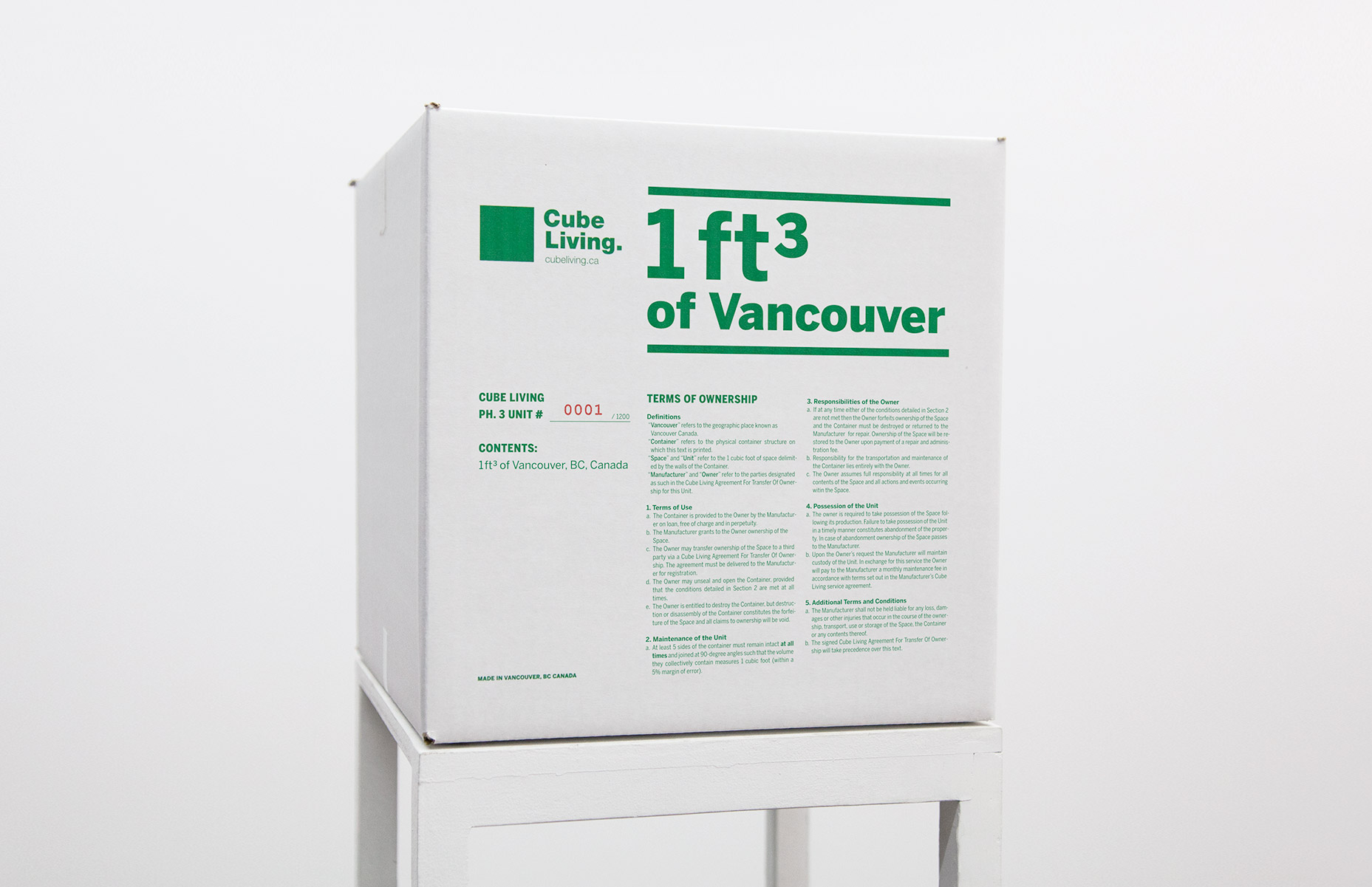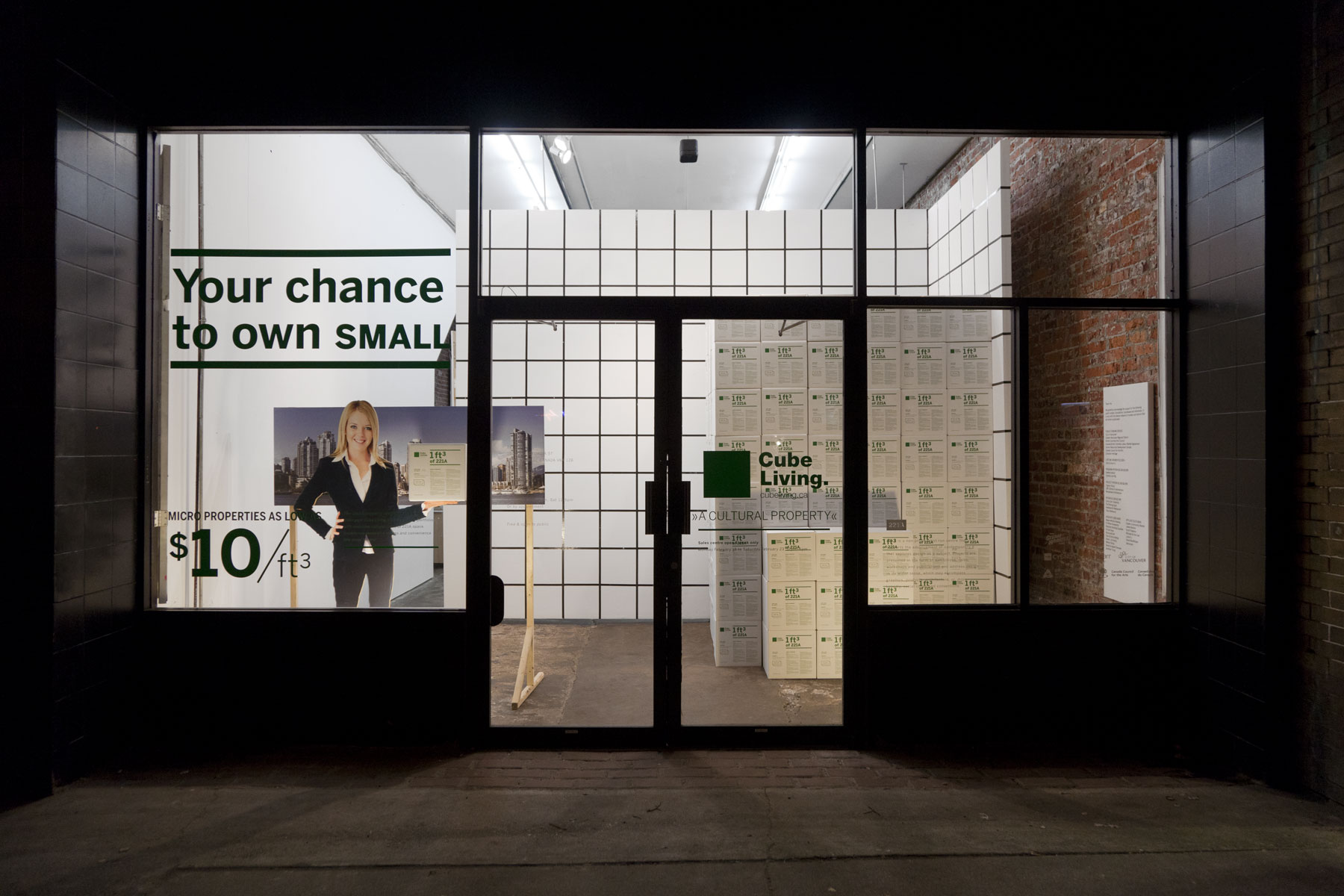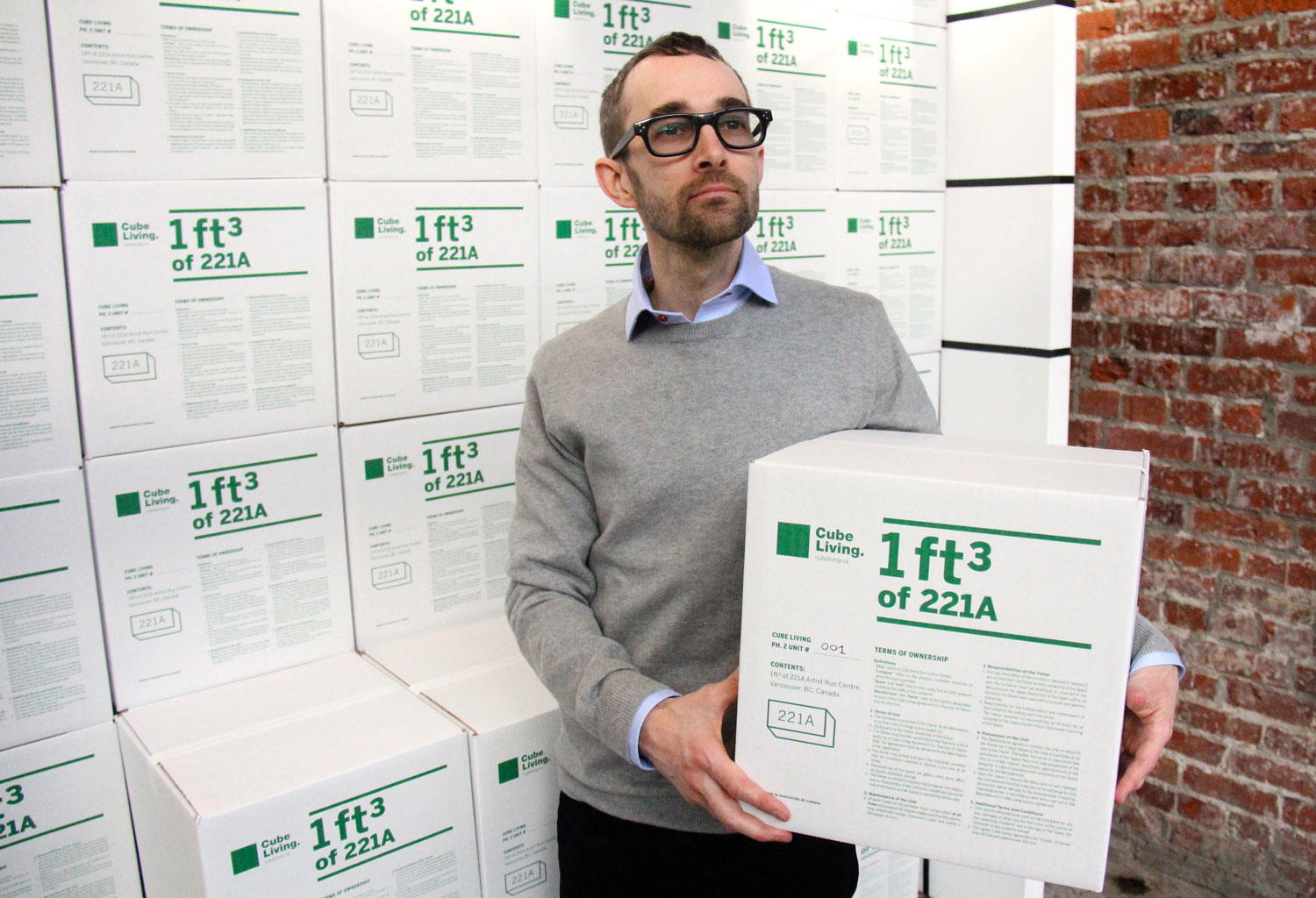

Cube Living is an ongoing critical design project that investigates how space is produced in cities, proposing that urban space exists primarily as a social ontology reified through a system of agreements and transactions within a network of agents. In such a system material considerations are secondary and supply is determined mainly by network dynamics and relations of power that are defined through contractual documents and enforced by social institutions.
How is it that space (by definition an intangible entity) is made into an object? —and what kind of spatial object object is created by our current practices of spatial production? The project investigates the social, legal and economic production of space in urban environments and the nature of space itself as an ephemeral object that is created, traded and destroyed through social practices. Extrapolating from the current praxis of real estate production, Cube Living creates a speculative object that exists as a granular and mobile unit of spatial ownership.
The current phase of the project, Cube Living Vancouver, investigates the city of Vancouver as a store of symbolic and financial capital that has become increasingly disconnected from use value and real economic production. It revolves around the production of a series of 1-cubic-foot spatial property units defined by the boundaries of their containers and the terms of their sales contract. They are priced at the median cost of Vancouver residential real estate and the total number of units is limited to 1200, equalling the 1200-cubic-foot the volume of a standard 150 square-foot downtown micro suite. Pre-sale units are now available for purchase at cubeliving.ca and can be shipped abroad or maintained locally through a property management service.
Instead of perpetuating the illusion that urban space is a finite zero-sum resource Cube Living creates a kind of space that is explicitly additive. Through the terms of its ownership agreement Cube Living units co-exist next to, overlapping with, and inside of other spaces. I regard this as a material form of speculative paper architecture.

Architect Mark Ashby and I initially launched Cube Living during 2008 as a series of design-fiction sales presentations exploring the role of financial markets in shaping the urban landscape and history of Vancouver Canada. This culminated in my 2013 performative exhibition where a showroom at 221A Artist Run Centre served as the sales platform for a dematerialized hyper-inflationary spatial commodity product.
Through the serial production of one-cubic-foot spatial property units, the Cube Living project embodies the entire process of property marketing, sales, manufacturing, and management services, all within a five minute point-of-purchase interaction. The 2013 series, Cube Living 221A, is limited to 250 units. Five units of this original series remain available for purchase. The current unit market price is $46 CAD. A concierge property management service is available to buyers who don’t wish to take possession of their units.
Cube Living 221A is legally bound to 221A Artist Run Centre. Every Cube Living 221A Unit is contractually recognized as part of the art centre. These units are created under contract upon purchase, so when a buyer purchases a Unit and the sales contract is executed the art centre de facto increases in size. In this way the buyers literally own a part of the centre, and as buyers take physical possession of their Cube Units the art centre becomes distributed geographically.

Through talks, point-of-purchase sales and manufacturing performances Cube Living traces the historical deployment of particular language tools that played a determining role in forming the spatial regime of the place we know today as the city of Vancouver: cartography, grid-based land planning and surveying systems, land title documentation and property transfer proceedings, and real estate marketing media. I employed these media to stage a space of discussion where visitors become participants in the production of a new kind of spatial property object.

During my historical research it became apparent that although urban “space” and “land” are often misleadingly presented by the real estate industry as permanent objects and finite material resources, in fact space is ephemeral. The space we inhabit only exists by virtue of our actions — by virtue of the way we inhabit. Space isn’t discovered, it’s invented, and the spaces we live in only persist as long as we maintain our specific social conventions and agreements of ownership, access and occupation.
Although this has been the case throughout history it becomes very obvious with the invention of condominiums (in Vancouver via the Strata Title Act of 1967) and legal title to air rights, which allowed real estate developers to create and sell spatial property objects divorced from the land surface. As we experience simultaneous inflation in both supply and price, industry and government work hard to maintain the antithetical roles of real estate property as personal home, national economic driver, and also fungible global asset.
Grünenfelder, Alex. 2015. “Cube Living 221A: The Parallax of Spatial Commodities.” International Journal of Žižek Studies. Volume 9, Number 1. weblink
Wong, Jackie. “Buying Vancouver Space One Cubic Foot at a Time.” The Tyee , 20 February 2013, weblink.
“Even you can afford to buy this Vancouver space.” Metro Vancouver, 2013, weblink.